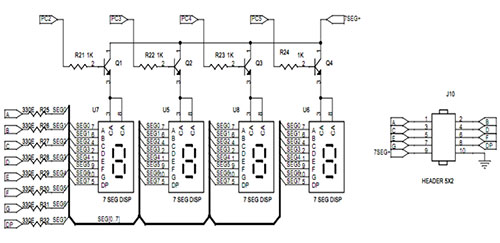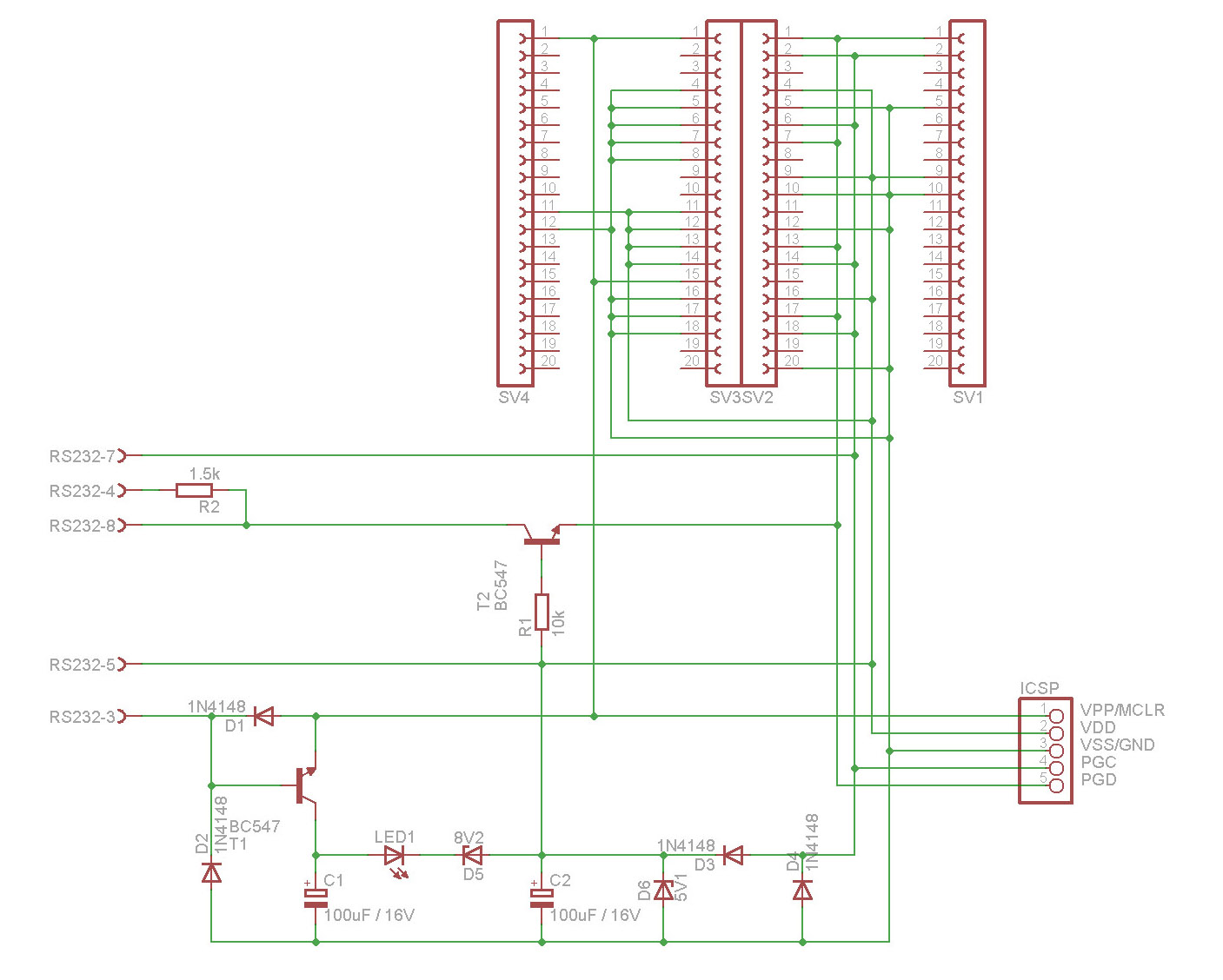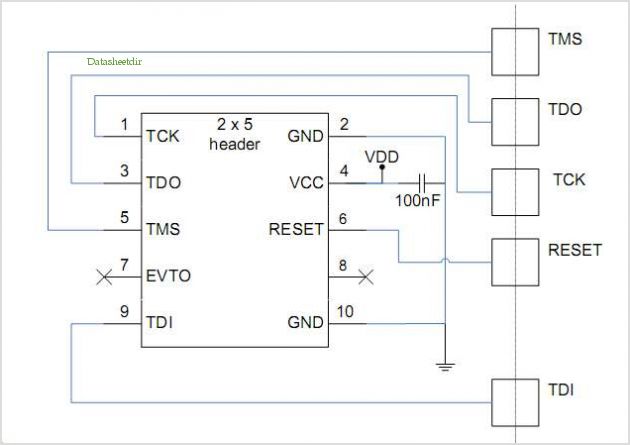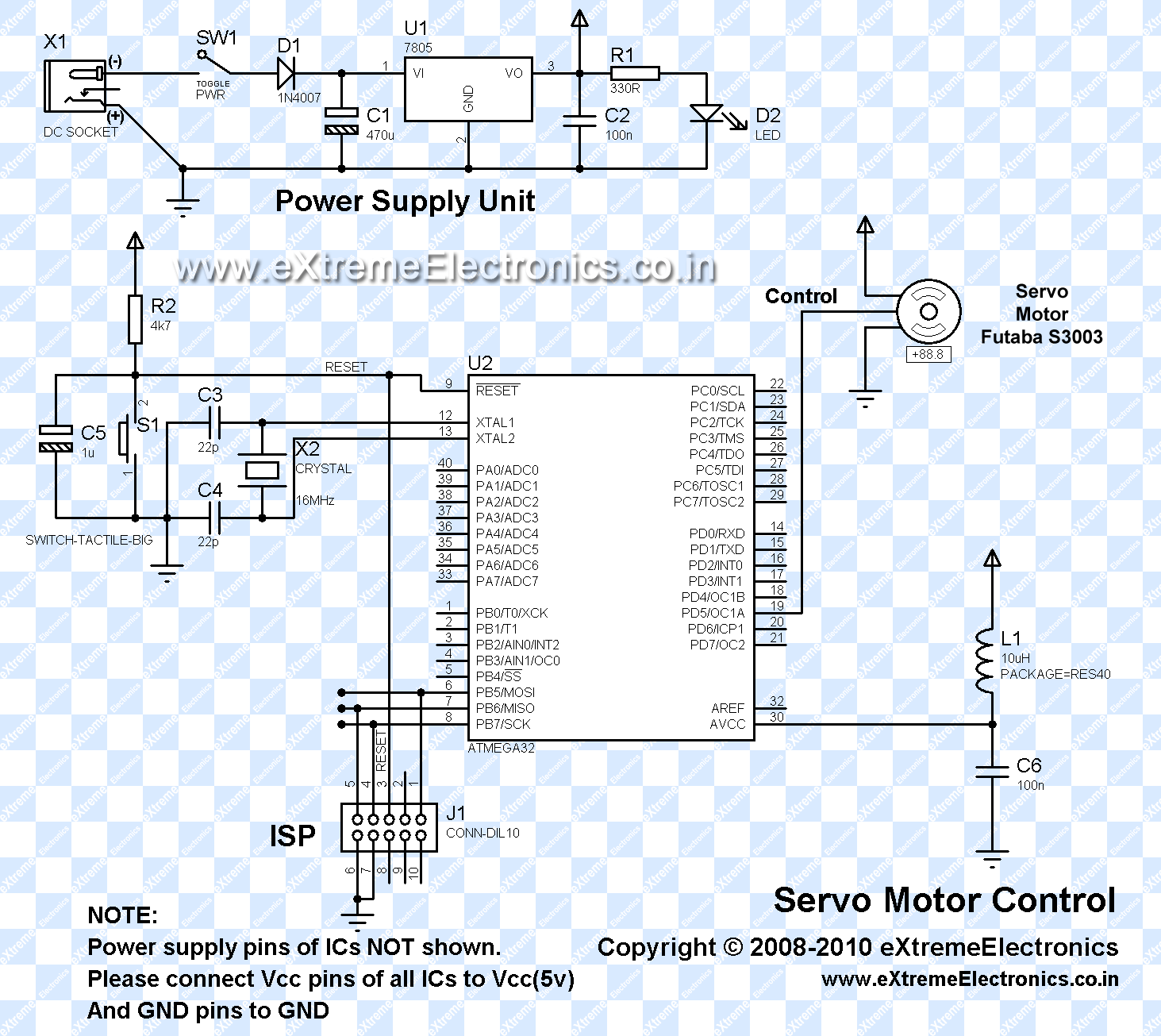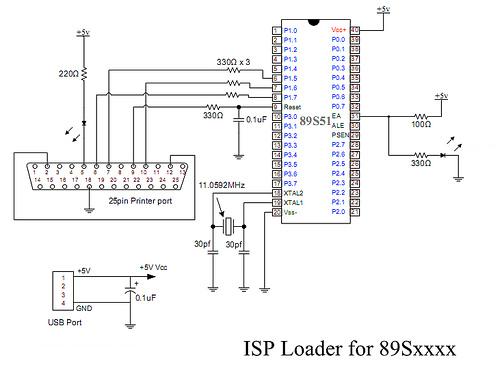
AVR Programmer (AT90S2313)
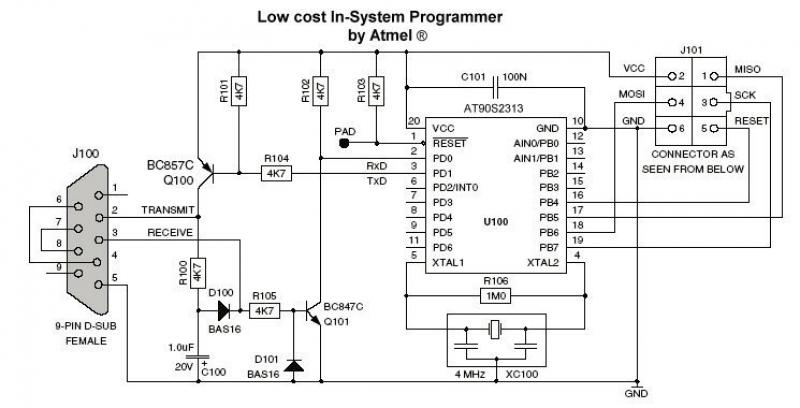
To begin with a family of microcontrollers, a programming device and an assembler are essential. These are the fundamental tools required to start development. Development kits, which often include device programming and are reasonably priced, are preferable. The AVR microcontrollers provide excellent opportunities for developers. Most AVR microcontrollers support the SPI communication line. Programming across various types occurs through the SPI line. The circuit serves as an interface between the PC and the microcontroller, connecting to the parallel port and providing an SPI line. This board also serves as a foundation for designing with the AT90S231 microcontroller. The SPI interface allows for programming the microcontroller directly on the circuit.
The AT90S231 is a fast RISC processor with a specific structure and features tailored to various applications. It is available in DIP packaging with 20 pins and PLCC44 with 44 pins. Manufactured by ATMEL, it has gained popularity due to its capabilities and low cost. The 20-pin microcontroller includes all necessary logic circuits to function as a standalone microcomputer. The AT90S231 is a low-power 8-bit CMOS microcontroller. Its central processing unit (CPU) is based on the RISC AVR architecture, resembling 32-bit ARM processors. Each machine cycle executes a strong instruction, reaching a maximum of 10MIPS with a 10 MHz crystal. Each instruction has a 16-bit bandwidth, allowing a microcontroller with 1024 bytes of memory to accommodate up to 512 instructions. The program memory (ROM) is constructed using RISC technology. Most instructions require only one clock pulse for execution, in contrast to MCS51 processors that require 12 pulses per instruction, and PIC processors that require 4. The AVR core encompasses a total of 118 instructions, most of which execute in a loop.
Internally, the AT90S231 features 32 general-purpose 8-bit registers. These instructions interact directly with the registers, achieving high performance. Of the 32 registers, two can be accessed directly by the arithmetic logic unit (ALU), allowing two registers to be combined in a single instruction. This design results in a more efficient architecture, enabling faster coding compared to conventional CISC microcontrollers. The AT90S231 is equipped with 2KB of FLASH memory, 128 bytes of EEPROM, and 128 bytes of SRAM. Most models include EEPROM memory, which can be used to store values that must persist through power interruptions.
The printed circuit board (PCB) design required for assembly is illustrated in Figure 2. The assembly process involves mounting components according to the specified format. The component count is minimal, facilitating easy sourcing. Prior to equipment installation, a visual inspection of the PCB is recommended to check for potential short circuits. After inspection, the board should be cleaned with a solvent. Assembly should commence with the installation of resistors, capacitors, diodes, and the crystal oscillator. All resistors should be rated at 1/8W. During component installation, attention must be paid to the correct orientation of polarized components, such as electrolytic capacitors and integrated circuits.
Planning and collaboration with a software program is essential. The programming software is user-friendly; it allows users to load the desired program file and transfer it to the microcontroller. If the software supports multiple microcontrollers, the user should select the processor type, specifically the AT90S231, before proceeding with programming.The ATMEL, with family AVR, was consolidated in the field of microcontrollers. The microcontrollers are, providing fast core and a variety of peripherals. These features continue to occupy the attention of engineers and earn their preference. The developer will see, it accepts all models of the family of AVR. It is an excellent tool that stands out for its high performance and simplicity in handling. To develop, based on the record of AVR, the AVRDONGLE.PDF. If someone wants to design an application, then comes the question, "How to choose a microcontroller. Whether professional or amateur, this question is not easy to answer. Proposals are many. Each family of microcontrollers has its pros and cons. Each microcontroller in practice, is a miniature computer, since it includes points of entry and exit is the possibility of code execution.
If we start with a family of microcontrollers in the simplest case, we need a programming device and an assembler.
These are the basic tools with which to begin. Of course there are the development kits, which include device programming, especially if it is not expensive, are preferable. The developer is, quite simply, when we say that it gives a very good opportunity to spend at the AVR.
Most of AVR microcontrollers have a communication line, the SPI. Programming is the same for all types, with line SPI. The circuit here is an Interface, between PC and microcontroller. Connects to the parallel port and delivers a line SPI. The same board is also a basis for planning for the microcontroller AT90S231. The door SPI enables a microcontroller to be programmed, on the circuit where he is. The AT90S231 is a fast RISC processor with a structure and has special features for each application. Available in DIP housing with 20 pins and PLLC44 with 44 pins. Manufactured by ATMEL and have great success because of their potential and low cost. The microcontroller with 20 pins, has all the logic circuits that make it stand-alone microcomputer. The AT905231 3 is a low-power microcontroller 8BIT type CMOS. The central processing unit CPU, is based on the structure of the RISC AVR. Their design is very similar processors ARM, which is 32-BIT. In each machine cycle is running a strong mandate, reaching 10MIR5 crystal 10Mhz. Each command is bandwidth 16-bit. This means that a microcontroller with memory 1024 bytes, fits up to 512 commands. The program memory (ROM) built technology with RISC. Most commands require only one clock pulse to run (for comparison, MCS51 processors require 12 pulses per instruction, while the PIC 4 beats).
The AVR core combines a total of 118 orders, most of which run in a circle. Internally, it has a total of 32 registers, the 8 bit generic. These commands deal directly with these registrars and so achieve high performance. The 32 registers, two each have direct access to the unit ALU, so that two registers are combined into one command. This has resulted in an architecture more efficient and faster to code up to ten times the conventional mikrokontrolers CISC.
The AT90S231 is equipped with memory type 2KBYTES FLASH, also has 128BYTES EEPROM and 128BYTES SRAM. Almost all models have memory EEPROM, which can use to store values ??that do not want NA HA shall be approved at the interruption of supply. The printed circuit you need to make the construction, shown in Figure 2. This will mount the materials in accordance with the format. The number of materials are small and will not create any problem in finding them. Even before you begin the installation of equipment, it is to do a visual inspection in printed, maybe some short-circuits island to another.
In the end, the board clean with solvent. Start the assembly by placing the resistors, capacitors, diodes and crystal. All resistors are 1/8W. When installing the equipment must be observed in the right direction of the channels, the electrolyte and integrated. Planning, in cooperation with a program. The use of the program is very simple. Load the file we want to program and then transfer it into the microcontroller. If the program you use prrizetai for more microcontrollers, then through the program, select the processor type, 2313 and move to programming.
🔗 External reference
